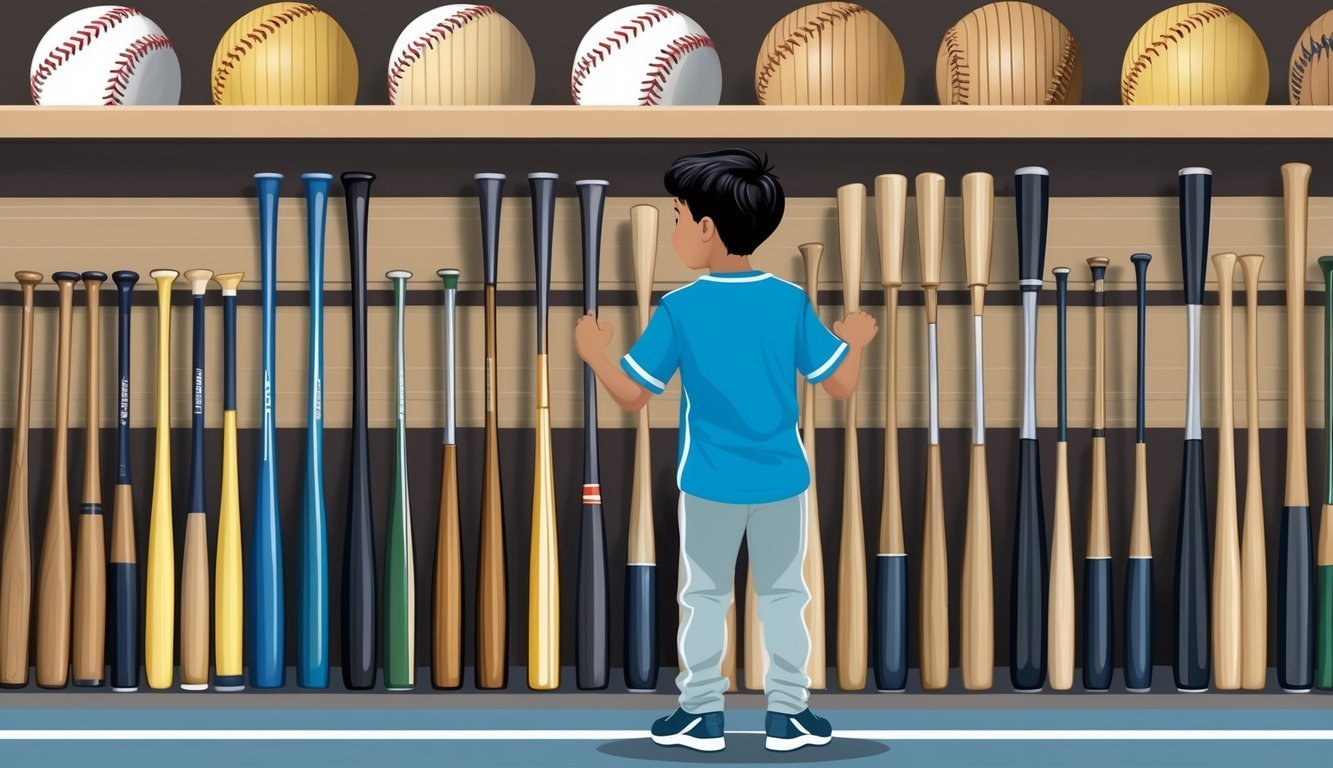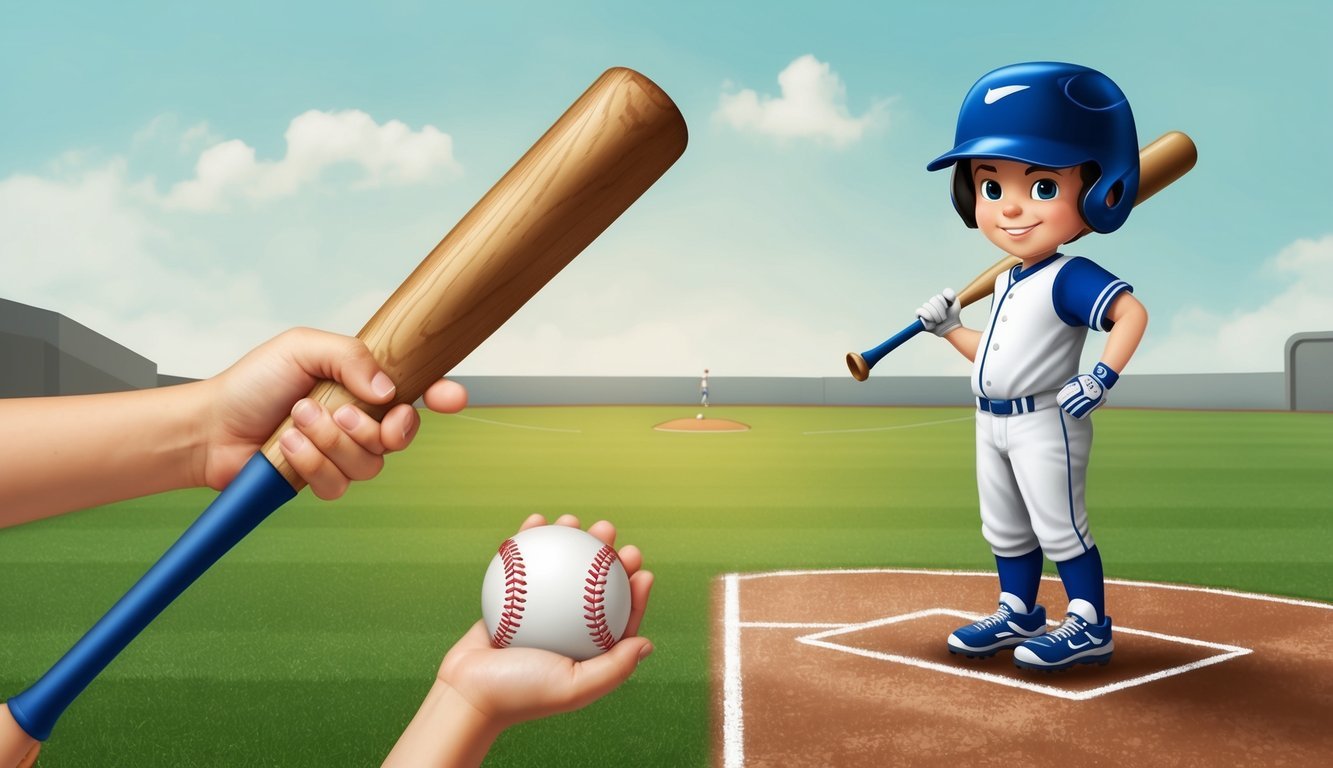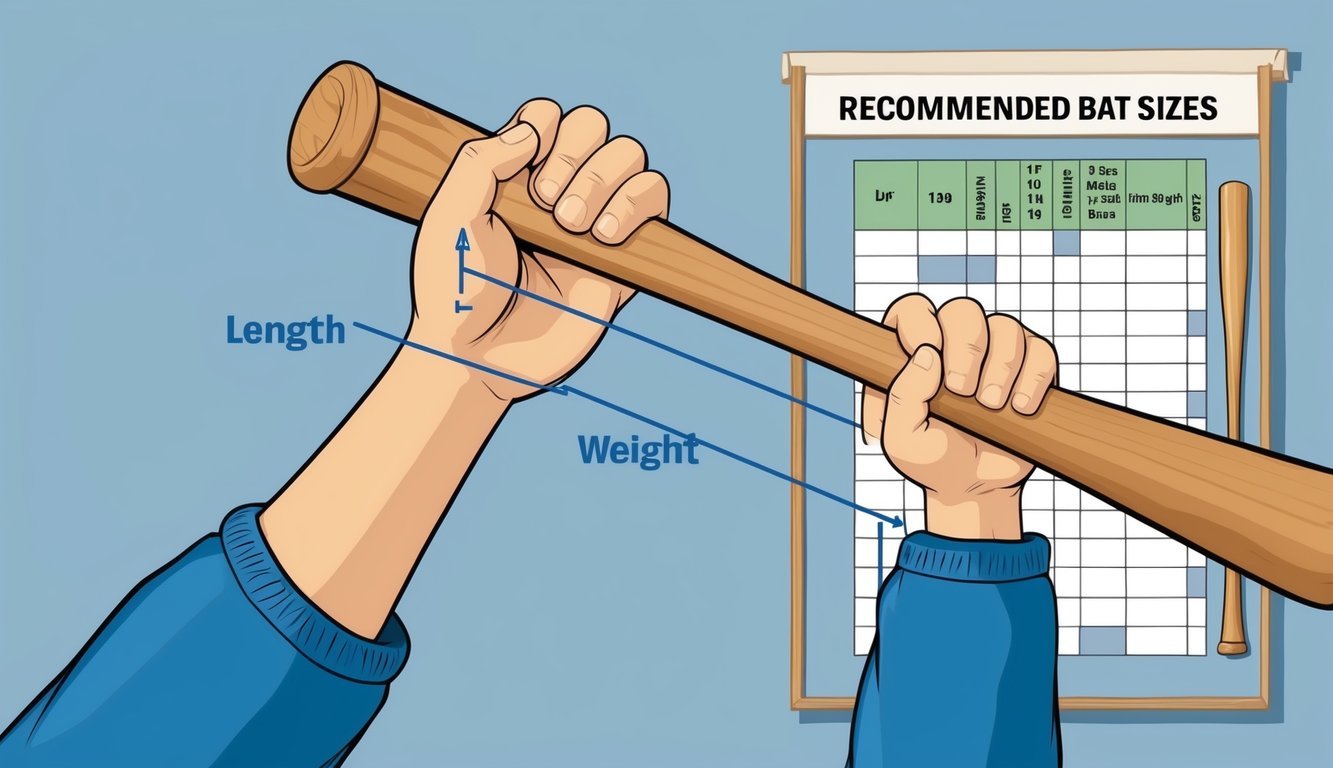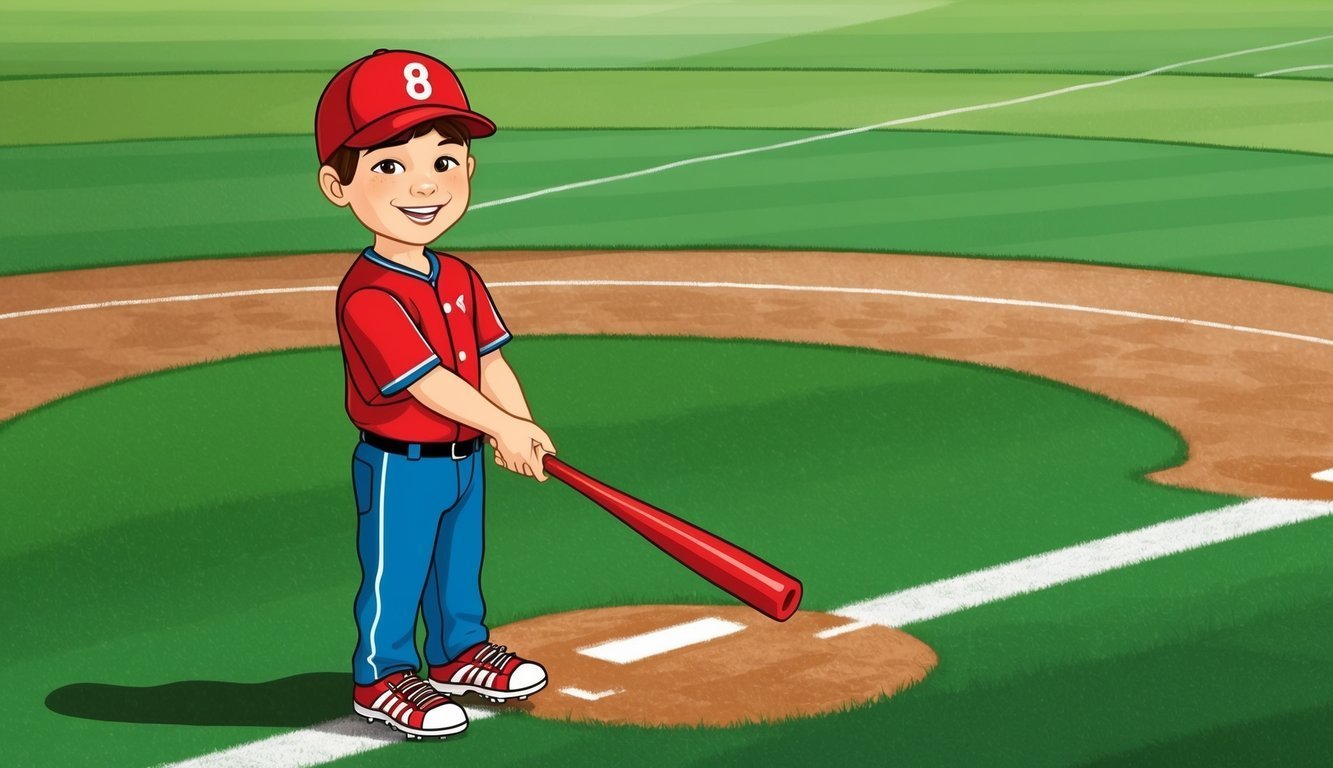Choosing the right bat size for an 8-year-old baseball player is crucial for their success and enjoyment of the game.
It can make a significant difference in their ability to hit the ball and develop proper batting techniques. The ideal bat size for most 8-year-olds is 28 inches in length and 18 ounces in weight (28/18).
This size provides a good balance of control and power for young players at this age.
However, it’s important to remember that every child is unique.
Some 8-year-olds may feel more comfortable with a slightly longer 29-inch bat or a slightly shorter 27-inch bat, depending on their height and strength.
When selecting a bat, parents should also consider the drop weight, which is the difference between the bat’s length in inches and its weight in ounces.
For 8-year-olds, a drop weight between -10 and -12 is typically recommended.
This range allows young players to swing the bat with ease while still generating enough power to make solid contact with the ball.
Understanding Bat Sizing for Young Players
Selecting the right bat size is crucial for young players to develop proper technique and enjoy the game.
Factors like height, weight, and age all play a role in determining the ideal bat for an 8-year-old.
Importance of the Right Size
A properly sized bat allows young players to swing comfortably and make solid contact with the ball.
It helps improve batting mechanics and reduces the risk of injury.
When a bat is too heavy, it slows down swing speed and makes it difficult to control.
On the other hand, a bat that’s too light may not provide enough power.
Parents should consider their child’s strength and skill level when choosing a bat.
A balanced bat is often recommended for beginners, while more advanced players might prefer an end-loaded bat for extra power.
Baseball Bat Size Chart for 8-Year-Olds
Most 8-year-olds use bats between 27 and 29 inches in length.
The weight of the bat is typically 17 to 19 ounces.
A common bat size for this age group is 28 inches and 18 ounces.
Here’s a simple bat size chart for 8-year-olds:
| Height | Weight | Bat Length |
|---|---|---|
| 4’0″ – 4’4″ | 60 – 70 lbs | 27″ – 28″ |
| 4’5″ – 4’8″ | 70 – 90 lbs | 28″ – 29″ |
| 4’9″ – 5’0″ | 90 – 100 lbs | 29″ – 30″ |
The drop weight, which is the difference between bat length and weight, is also important.
For 8-year-olds, a drop weight between -10 and -12 is usually appropriate.
This means a 28-inch bat would weigh between 16 and 18 ounces.
Factors Influencing Bat Selection

Choosing the right bat for an 8-year-old involves considering several key elements.
These factors work together to ensure the young player can swing comfortably and effectively.
Player Size and Strength
An 8-year-old’s height and weight play a crucial role in bat selection.
Most 8-year-olds are around 4’1″ tall and weigh about 50 pounds.
Larger or stronger kids may handle slightly heavier bats.
Smaller players often benefit from lighter options.
It’s essential to match the bat to the individual child’s physical capabilities.
This ensures they can control the bat and make solid contact with the ball.
Bat Weight and Length
The ideal bat weight for an 8-year-old typically ranges from 16 to 20 ounces.
Bat lengths usually fall between 26 and 29 inches.
A simple test: Have the child hold the bat with one hand, arm extended to the side.
If they can hold it steady for 30 seconds, it’s a good weight.
For length, place the bat’s end on the ground next to the player’s leg.
If the bat reaches their hip but not past it, it’s likely a good fit.
Drop Weight Considerations
Drop weight is the difference between a bat’s length in inches and its weight in ounces.
For 8-year-olds, a drop weight between -10 and -13 is ideal.
A -10 drop weight offers more power but may be harder to swing.
A -13 drop is lighter, allowing for quicker swings but with less power.
Example: A 28-inch bat weighing 18 ounces has a -10 drop weight (28 – 18 = 10).
Choosing the right drop weight depends on the player’s strength and hitting style.
It’s often best to try a few options to find the perfect balance.
Types of Bats for Different Leagues

Baseball leagues have specific regulations for bat types and sizes.
These rules ensure fair play and player safety across different age groups and skill levels.
USA vs USSSA vs BBCOR Bats
USA bats are designed for Little League and youth baseball.
They have a balanced feel and perform similarly to wood bats.
USSSA bats, used in travel ball and some youth leagues, often provide more pop and power.
When selecting the right bat for younger players, it’s essential to consider the regulations and specifications of the league, as these can vary significantly.
Many parents wonder, “can you use a baseball bat” designed for higher leagues in youth games, but doing so might not be allowed due to safety and performance standards.
Therefore, choosing the correct bat tailored to the player’s age and skill level ensures optimal performance and compliance with league rules.
BBCOR bats are required for high school and college play.
They have a more restrictive performance standard to maintain competitive balance.
USA bats typically have a 2 5/8″ barrel diameter, while USSSA and BBCOR bats can have up to 2 3/4″ barrels.
League Requirements and Certifications
Little League Baseball requires USA-certified bats for players 12 and under.
These bats must display the USA Baseball stamp.
USSSA leagues allow bats with the USSSA 1.15 BPF stamp.
High school and college players must use BBCOR-certified bats.
These bats have a -3 length-to-weight ratio and a maximum 2 5/8″ barrel diameter.
The BBCOR certification ensures consistent performance across different bat models.
Some youth leagues may have additional restrictions on bat length, weight, or materials.
It’s essential to check specific league rules before purchasing a bat.
Material and Construction of Baseball Bats

Baseball bats come in various materials and designs, each offering unique benefits for young players.
The choice of bat can significantly impact an 8-year-old’s performance and enjoyment of the game.
Alloy vs Composite vs Wood Bats
Alloy bats are popular among young players due to their durability and affordable price point.
They offer a good “pop” right out of the wrapper and can withstand frequent use.
Composite bats, while more expensive, provide a larger sweet spot and reduced vibration on contact.
These bats may require a break-in period to reach peak performance.
Wood bats, though less common for 8-year-olds, offer a traditional feel and help develop proper hitting technique.
They’re heavier and have a smaller sweet spot, which can be challenging for younger players.
One-piece vs Two-piece Bats
One-piece bats are made from a single material, offering more power and less flex.
They’re great for strong contact hitters but may cause more vibration on mis-hits.
Two-piece bats have separate barrel and handle components.
This design reduces vibration and provides more flex, potentially increasing bat speed.
For 8-year-olds, two-piece bats can be more forgiving and comfortable to use.
They allow for a smoother swing and help minimize the sting from off-center hits.
Technology and Performance
Modern bat technology has greatly enhanced performance.
Alloy barrels with composite handles combine durability with reduced vibration.
Some bats feature extended sweet spots or special alloy compositions for improved pop and distance.
Manufacturers often incorporate proprietary technologies to enhance bat speed, reduce weight, or improve energy transfer.
These advancements can help young players hit with more power and consistency.
Selecting the Best Bat for Comfort and Performance
Choosing the right bat involves considering several key factors that affect comfort and performance at the plate.
A well-suited bat can significantly improve a young player’s hitting ability and enjoyment of the game.
Balance and Swing Weight
Bat balance refers to how weight is distributed along the bat’s length.
End-loaded bats have more weight toward the barrel, while balanced bats spread weight evenly.
For 8-year-olds, a balanced bat is often recommended.
Swing weight is how heavy a bat feels when swung.
A lighter swing weight allows for better bat control and faster swings.
This can be especially helpful for younger players still developing their hitting mechanics.
Many youth bats feature a -10 to -13 drop weight, which is the difference between bat length in inches and weight in ounces.
A lower drop weight number means a heavier bat relative to its length.
The Role of the Handle, Knob, and End Cap
The handle’s design affects grip and comfort.
Some bats have cushioned or textured handles to reduce vibration and improve control.
A thinner handle can allow for quicker wrist rotation.
Knob shape varies between models.
A flared knob can provide a more secure grip, while a tapered knob may feel more comfortable for some players.
The end cap influences the bat’s weight distribution and vibration dampening.
Lightweight end caps can help create a more balanced feel, while heavier ones add power to the swing.
Personal Preference and Hitting Style
Every player has a unique hitting style.
Some prefer a heavier bat for more power, while others opt for a lighter bat for better bat speed and control.
Let young players try different bats to find what feels most comfortable.
Comfort often translates to confidence at the plate.
Consider the player’s strengths.
A contact hitter might prefer a lighter, more balanced bat, while a power hitter may lean towards a slightly heavier, end-loaded model.
Encourage experimentation with different lengths, weights, and styles to find the perfect match.
What works best can change as the player grows and develops their skills.
